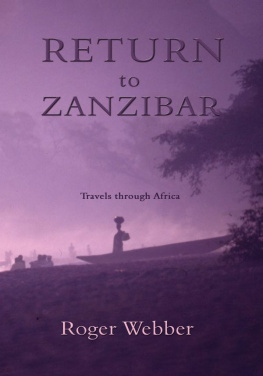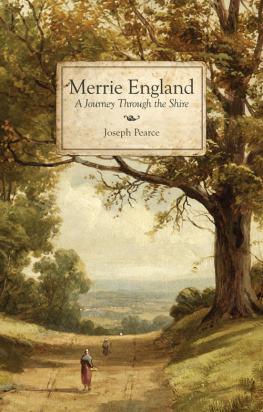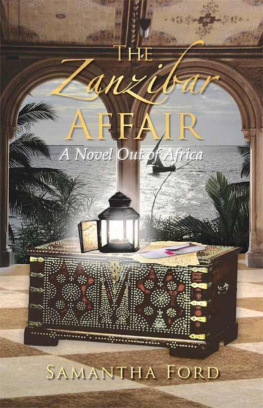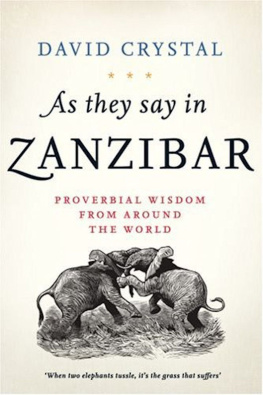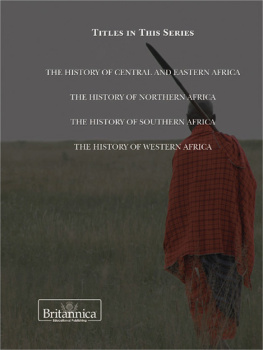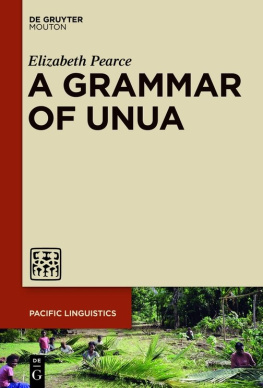THOUGH the modern city of Zanzibar is at the most two hundred years old, it has a fascination usually attributed only to much older foundations. The impression it makes on the casual visitor is a distinct one, that is not eclipsed, much less effaced, by sojourns in other and better known Eastern cities. It is generally admitted that one can re capture more of the atmosphere of The Thousand Nights and a Night in Zanzibar than in the modern City of the Caliphs, and I know of no other town where in a few short hours one can see such a pageant of history as is paraded before one's eyes in Zanzibar in the early months of the year. At this season one sees anchored in the harbour those strange crafts whose prototypes for years untold have brought traders and colonizers from all parts of the East, and one encounters in the streets representa tives of all the many races that have helped to make the island's history.
But the fascination of Zanzibar extends beyond the confines of the city. The island cannot aspire to majestic scenery, but there is beauty to be found all round its coral shores and in the waving palm and scented clove groves of the interior.
The interest and the influence of Zanzibar, however, reaches far beyond its own borders. For centuries it was the principal emporium of the eastern seaboard of Africa.
I have written at length of the countries that traded with Zanzibar and the east coast from the earliest times in the historical chapters of this book, but I had not thought it possible that those who traded there could have dealt with the city of London in early days. However, it seems likely that produce from Eastern Africa reached London long before the merchants of Mincing Lane traded in its cloves, for, delving into the history of Smithfield, I found in Fitzstephen the following lines on London's foreign trade, written in the twelfth century:
" Aurum mittit Arabs: species et thura Sabreus:
Arma Scythes: oleum palmarum divite sylva
Pingue solum Babylon: Nilus lapides pretiosos."
At one time the Zanzibar Empire stretched from Guarda fui to the Rovuma River, and inland beyond the great lakes. In addition, its ruler held sway over all the south-eastern corner of Arabia, and his influence stretched beyond even these extensive borders. At this time, the heyday of the Zanzibari-Omani Empire, the island became celebrated in the well-known saying, " When you play the flute at Zanzibar, all Africa, as far as the Lakes, dances." This empire has passed, but much of its influence remains. Swahili is one of the principal languages of the world, and it has been spread far and wide from Zanzibar. From Port Said to Durban, from Zanzibar across the Congo to the west coast, in Southern Arabia, Western India and in Madagascar, there will be found men who speak:it. Many of the Creoles of Mauritius and Reunion are of Zanzibar origin, and the Creole language, though French in its vocabulary, is Bantu in its grammar. You may hear in the Creole of Mauritius the folk-lore that you have heard in the Swahili of Zanzibar.
As for the Island of Pemba, though:it is somewhat overshadowed by the glory of Zanzibar, it is not without its fame. It has been described as the " Peart of the Indian Ocean," and to the Arabs it is known as Jezirat al Khuthra, or the Green Island. It is certainly one of the beauty spots of the world. In East Africa and Madagascar it has a more sinister fame, as it is looked on as the very University of Witchcraft.
From the Colonial Civil Servant's point of view, I suspect that there is but one Zanzibar and that one is rather spoilt by starting a career in the Protectorate, but none the less I count myself very fortunate to have spent the years from 1919-1927 there. Nearly all the material in this book was collected during that time from the inhabitants themselves. Certain of the history has been gleaned from other authorities, but as regards the ethnographical part, I found an unexplored field and therefore, despite its shortcomings, I hope the book will be of use to those whose study lies in this subject, and also to those who come to the island to help its people to achieve their destiny.
I think it is true to say that Zanzibar until recently has been only dimly aware of its earlier history, and barely conscious of the fact that it is the mother of the other dependencies of Eastern Africa. Some of this history I have already published in work derived from the historical chapters in this book and from others that from considerations of space have had to be omitted. An abstract of it first appeared, together with a resume of the Ethnography, in Zanzibar, an Account of its People, Industries, and History, and in the School History of Zanzibar, which Mr. Hollingsworth, of the Zanzibar Education Department, and I wrote in 1925. Some of it has reappeared in Mr. Hollings.worth's Short History of the East Coast of Africa, and the children of Zanzibar and the east coast are therefore now enabled to learn something of the story of their own country. No country can afford to neglect its history, and it is my hope that lessons may be gained from this story which may be of value in the making of future history.
It is possible that Zanzibar history may yet be taken much farther back. In 1927 I took to the South Kensing ton Museum some fossils obtained in blasting operations at Chukwani, six miles south of Zanzibar town, and was informed that they had the appearance of being a typical Pleistocene stone breccia. It has yet to be proved that they are what they seem, namely the remnants of the meals of Stone Age men, from the bottom of a collapsed cave.
As regards the ethnography, nothing beyond the rsum referred to above and a few articles in Man and the Zanzibar Gazette has appeared before. The only safe foundation for any civilization is that built on the traditions and life of a people, and so I hope that this record of the manners and customs of the Zanzibaris will be of use to them and those who are called on to administer them. I have included in the book a good deal of the magic practised in both islands, and I hope that an understanding of it will help, with patience and sympathy, to its elimination as education progresses.
I have given an extensive bibliography of Zanzibar literature in Zanzibar, an Account of its People, Industries, and History. Space forbids the reproduction in this book of the names of any books not actually used.





